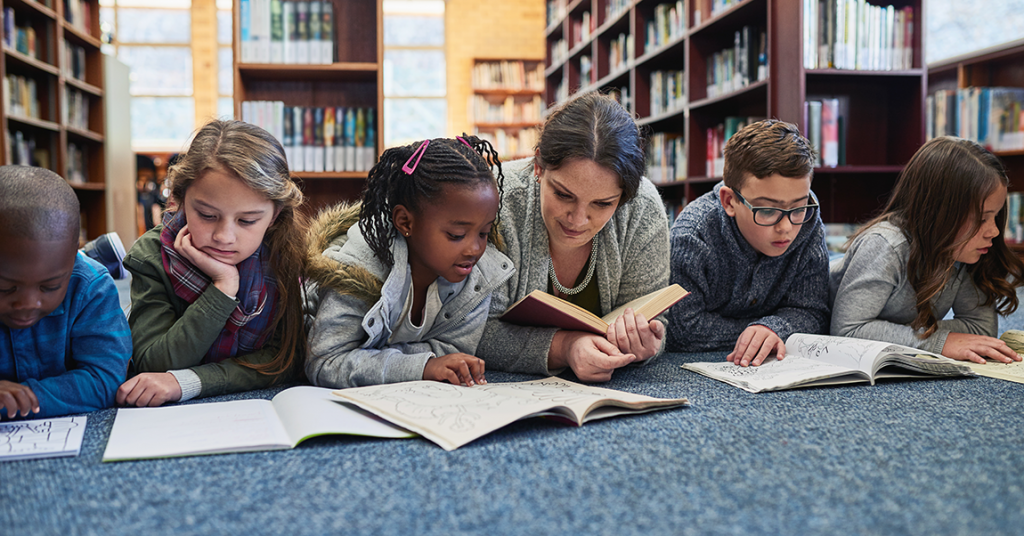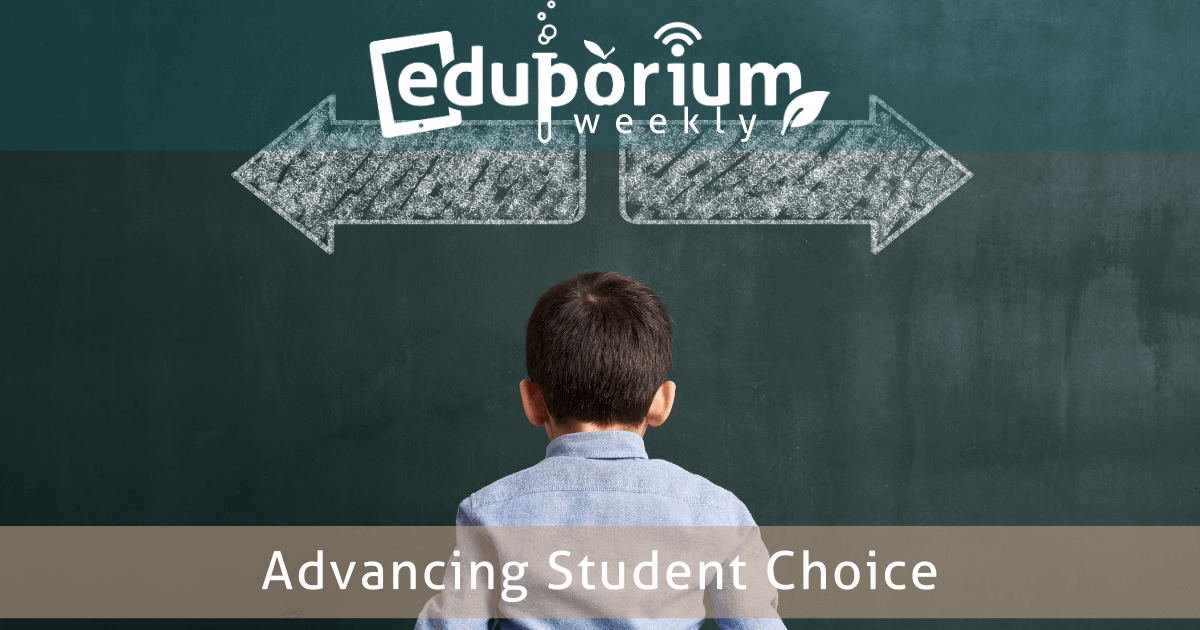Not every student learns in the same way, has the same skills as their peers, or can always find the appeal in everything their teachers want them to find interesting. Kids of all ages have different preferences when it comes to how they learn. Some like to read until they’ve mastered all key content while others prefer to get hands-on and actually try something themselves to fully understand it. And, still others have to visibly see a principle in action to completely grasp it. This, we should clarify, is not a problem—this is how life is in 21st century education, which includes a quest to address student diversity by focusing on student choice in how they learn, the pace of their learning, and the content they learn.
The Immediate Future of Student Choice
Any time we transition to a new president, many questions about education begin swirling. It happened in 2016 and, again in 2020, when Secretary Cardona took over. Many of those questions have centered on our education system and what types of progress we can all make. Like always, student choice remains a contentious topic with the only certainty that it's tough to agree on. There have been lots of discussions on other issues, like learning loss, social-emotional learning, and more, but there still remains that huge focus on student choice. Plus, there's still talk about scrapping Common Core systems, which is, perhaps, a sign of transitioning to more personalization—something that gives students more say in their learning.
Creating student choice in the classroom.
The Every Student Succeeds Act included language to address this and create greater student choice opportunities. And, while some want to scrap Common Core, that remains tough since it's been in place for so long. One thing we can do, however, is let state leaders have more of a role in these decisions and encourage them to create more personalized learning tracks for their students, which, of course, would give them more choices during the school day and school year. Creating such a seismic shift would have its challenges, however, but, with former teachers currently running our country, movements that expand student choice opportunities might become more prevalent. And, to help promote greater student choice initiatives, educators and officials need to work together.
The role of politics and laws.
For now, there is no imminent promise of legislation requiring greater student choice in our schools. And, that might be okay. The fact that there are discussions is a good first step for gaining momentum over the next few years. It’s tough to just completely overhaul the entire educational system but our leaders always have specific goals in mind. For large-scale change surrounding student choice initiatives, we would need legislation to enable new and sustainable programs. As we near election season, however, there are other key political issues—and even other education issues beyond student choice. It is possible, but, over the next few years, a shift in student choice options might take some real work.
What Student Choice Actually Looks Like
Students get true classroom agency with the power to choose where and how they learn. This innovative approach to instruction has and continues to play a critical part in skyrocketing student engagement while enhancing learning. While the value of student choice in the classroom is very apparent to many education leaders, achieving a state in which it can flourish can be pretty difficult. It’s tough because it requires a shift from traditional teacher-led instruction to an environment in which students direct their own learning. If we want students to guide their education experience, however, giving them choice in what works best is vital.
How choice benefits adolescent development.
Many educators already empower students through student choice programs, which helps everyone in the community understand more about this trend. Student choice is a subset of learning that closely resembles personalized learning in the sense that it promotes student ownership and self-direction among other nice advantages. Learning in this way has been proven to improve results and bolster key developmental skills in students of all ages. Student choice actually encompasses a few different areas of education, including students’ ability to choose their own learning path, the pace at which they progress, and the environment in which they learn just to name a few. With these opportunities, students can make key decisions about their education, which further cements student agency.
Different types of student choice programs.
One form of student choice is performance-based learning in which kids work at a comfortable pace and advance through learning once they demonstrate proficiency, which eliminates some stresses from quick learning. Another direction is to give students “menus” of options from which to choose in improving their learning. Rather than choosing from every option, these menus offer more narrow choices that educators pick to still offer students guided paths. There are also student choice models that reflect the importance of student ownership and self-direction. In the student ownership model, kids can identify which of the elements of learning have become their very own responsibility. In any case, students need to develop initiative and responsibility as they gain greater agency in choosing their own path.

Giving Students Choice Can Create Unstoppable Learning
For years—maybe even more than a couple of centuries—teachers have been at the center of the learning experience. In the 21st century, however, this doesn't have to be true and can arguably even obstruct from children getting the most out of learning. Having teachers get out of the way can be a tough pill to swallow but, with contemporary learning initiatives, like student choice, these challenges of personalizing education and creating deeper learning experiences require some new strategies. But consider this, though; choice-based learning, while different, can inspire kids to think outside the box and get creative. When not limited by across-the-board constraints, they will be able to let their imaginations take over.
Student choice and increasing creativity.
By sticking only to requirements, teachers can rob kids of thinking for themselves, creating independently, and using their imaginations. When you get down to it, student choice is actually a relatively easy concept to implement because there are so many aspects of learning that students should be able to personalize. Take essays, for example. Why should every student write the same essay? They won't all have a genuine interest in the same topics but the chance to convey their own thoughts about a personal passion can help them better engage in their writing. Plus, what teacher wants to read the same essay 25 times? When your students have freedom to choose their writing topics, the books they read, and even their problem-solving strategies, they can become more efficient and learn more in the process.
How choice creates other opportunities.
With opportunities to choose for themselves, kids can channel curiosities into responsible decision making that has immediate benefits. When they can discover something they are curious about and develop a plan to explore it, they are more engaged. Even if just a single period a day, classes centering on student choice can create a large-scale impact. When students can choose how to spend their time, many take advantage by doing what they need to do to develop various key strengths and weaknesses. They might seek specific help, assist friends with something, or just reflect on a topic away from the classroom bustle. Reflecting on what they want to learn helps children discover curiosities, what inspires them, and how to pursue it.
Personalized Learning Leads to Improved Student Choice
One of the effects of student choice is helping transform common lessons into something more interactive and student-friendly. Instead of a teacher standing at the front of their classroom and giving each child the same lecture, they can split students into teams and assign projects that will help them learn the same key skills and concepts—just arriving at them in some different ways—the one that works best for them. When giving kids the choice in how they show mastery, this example of student choice helps get everybody more involved and allows them to leave their own personal mark on the finished product. Student choice makes learning relevant to each individual student—something that, in today’s complex world, is so important.
Creating conditions for advancing student choice.
To create learning situations that are conducive to student choice, there are a few things educators can do. First, projects can be fairly simple no matter what grades students are in—the important thing is to provide choice in how they show their work. Next, teachers have to be comfortable in letting their students choose what they learn. If you're nervous about this proposition, it’s not as scary as it might sound. Especially with project-based assignments, students can benefit from different options since this allows them to operate most comfortably. To go along with these first two factors, teachers should also be sure to give students a project framework. Just because students can choose what and how they learn doesn't mean you should just scrap standards. Sharing a brief framework with key points can enable their freedom of choice, so to speak, help them complete projects.
Using assessments to check for student success.
To make sure that student choice-based learning is running smoothly and helping with retention, teachers should continue to conduct assessments. These assessments do not have to be detailed and shouldn't be graded but it is important for teachers to check in with students from time to time to be sure they're on the right track and collaborating effectively. This leads to another good thing to have, which is teachers getting to know their students better. That’s important because it helps educators see how every child learns, what their strengths are, and how they can improve. Finally, to create an ideal environment, teachers cannot fear asking students what they need (or want). With student choice comes amplified student voice and all these freedoms can help students express interests and participate in learning.

Some Hacks to Foster Student Choice in the Classroom
Student choice and differentiated instruction are similar in the sense that they each help kids learn in the way that’s best for them. The goal of meeting each student's individual needs stays pretty much the same. When given added freedom in what they learn, students tend to feel more in control of their education and this is good for a couple of important reasons. With greater control of their learning, students experience greater levels of happiness during the school day and even lower levels of stress and anxiety. Whether it’s active, project-based learning or the traditional lecture-style preference, every student has a preferred way of learning. And, teachers are realizing the importance of tailoring their instruction to allow for this. Below, there are some suggestions for how to make it happen.
Flexible seating as a form of student choice.
Much of this discussion has centered on choices in learning but there's additional opportunities for choice during and after school. One of these options involves classroom design. Letting kids decide where to sit is actually a step towards earning more responsibilities as hopefully they'll choose to sit around classmates who help rather than hurt their learning. Another choice they would probably love to make is how and when they do their homework. While homework is still usually an important component of education, customizing this aspect can better serve each individual. Rather than assigning 30 questions or 30 math problems each night, teachers can try assigning 12 or 15 and let students select some from the 30 options. Then, they will feel more empowered and are more likely to take the time to provide thoughtful answers.
Creating greater freedom for student learning.
Back in the classroom, educators can offer students choice when it comes to their in-class work, too. They can offer suggestions (some worth more points) for activities and students choose what best suits them. In PBL, students can show understanding through essays, posters, presentations, blog posts, stories, videos, or another creative display. As long as they present a clear summary of learning, the way they do so should be up to them. Teachers can even give kids a choice in the ways in which they're tested, too. Assessments are also important to ensure that students know the concepts and skills but they don't have to be multiple-choice tests. Again, students could choose 10-15 questions or 3-5 within each section—or devise another creative way to show knowledge. With unstructured creative time naturally part of student choice, kids can learn in their favorite way and build real-world knowledge.
For the latest EdTech, STEM, and 21st century education news, follow us on Twitter and Instagram. Like us on Facebook, too, or sign up for our newsletter for our latest product announcements and offerings. If you have an idea for an Eduporium Weekly theme, send us a message on social media or comment below.




1 Comment